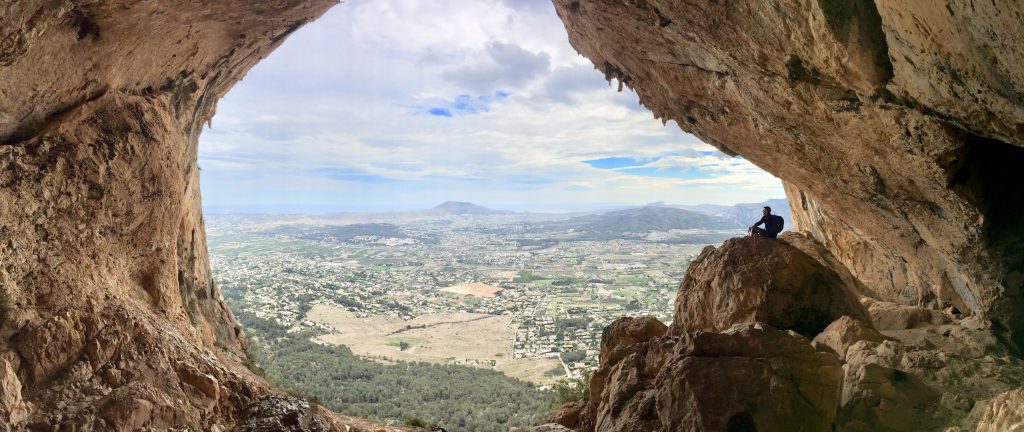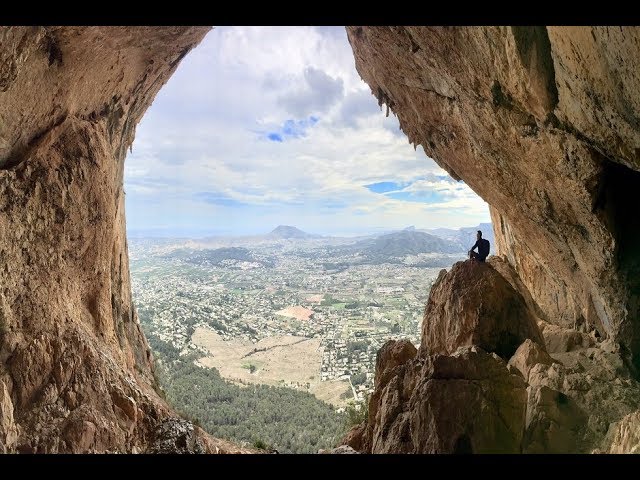The video above shows just a few examples of the wonderful views you can have when touring Spain.
EL RIO, LANZAROTE
Located 400 metres high, on the Risco de Famara, the Mirador del Río is one of César Manrique’s most representative architectural creations. It is located near the remains of an ancient military base that dates back to the end of the 19th Century.
CARMEL BUNKERS, BARCELONA
Located on a mountain, the Bunker Del Carmel offers an astonishing 360-degree view of Barcelona. Due to its remoteness, it is also a quiet and romantic spot to watch the sun going down, replaced by the mellow glow of the city lights.
EL VALLE LOOKOUT, TOLEDO
To get the ultimate photo of Toledo you need to cross the Río Tajo and climb the road on the other side to this strategic viewpoint.
You can either walk up from the Puente Nuevo de Alcántara or catch the Trainvision from Plaza de Zocodover which makes a stop here during its 30-minute scenic journey. The view is not dissimilar to the one depicted by El Greco in his famous landscape, Vista de Toledo (1596–1600).
FITU, ASTURIAS
At the foot of the El Fitu viewpoint, a wooden sign indicates the recreational area.
From the recreational area of El Fitu the views are fantastic. On clear days you can see part of the Picos de Europa. It has a large parking area, and nearby we can find a store of Asturian products and a bar. In addition, the area is the starting point for several routes.
FUENTE DE CABLE ( CANTABRIA)
In the heart of the Picos de Europa , the Cable Car of Fuente Dé, has a drop of 753 meters, placing the traveller at and altitude of 1,823 metres, in just 4 minutes!
From the upper station the visitor will be overwhelmed by a landscape of immense beauty.
LA ANTIGUA LOOKOUT, CACERES
The mountains of Las Hurdes are crossed by several meandering rivers, among which the Alagón stands out a one of the most visited places in the area: the meander of the Melero, in the vicinity of Riomalo de Abajo.
It is a dazzling natural landscape, which can be accessed both by car and on foot, and where you can see a spectacular view from its viewpoint, known as La Antigua.
MONTEFRIO (GRANADA)
Located off the tourist trail in the northwestern corner of Granada province near the Cordoba border, this friendly village enjoys one of the region’s most striking settings, with one of its churches perched on top of a bare, rocky pinnacle, overlooking the town and its surrounding hillsides clothed in olive groves and fields of cereal crops. It nestles between two memorable hilltop churches; you can’t miss either of them since they dominate the skyline.
PUENTE NUEVO DE RONDA (MALAGA)
Offering unforgettable views over the El Tajo gorge. The Puente Nuevo – new bridge – was actually completed in 1793 and took forty two years to build. The bridge joins the old Moorish town and the newer, El Mercadillo parts of the city. It is, by far in a way, Ronda’s most famous landmark.
SA CREUETA, MALLORCA
The Creueta viewpoint or the Colomer, located in the Nao end of the Formentor Peninsula, is an essential stop in the road that takes you to the lighthouse.
It is the first stop of a beautiful excursion of about 18 kms. along the peninsula of Formentor, where the Serra de Tramuntana ends with its impressive landscapes that combine sea and mountains.
SALTO DEL GITANO, CACERES
The legend goes that a gypsy was chased by a pair of Civil Guards from another era (dressed in a cape and leather three-cornered hat) into the Las Corchuelas mountain range and up to Falcon rock. Here he was trapped between the Tajo River ahead and his pursuers behind. The gypsy decided to jump and gained so much momentum that he landed on the other side of the riverbank, unscathed. Today, this very spot is the park’s lookout point.
THE ORDESA MIRADOR, HUESCA
The Ordesa Valley is a grandiose canyon whose sheer escarpments are divided into steel, grey or red-ochre strata rising to nearly 1000m. In spring, cascades streak the vertical face, swelling the turbulent trout-filled waters of the River Arazas as it rushes beneath flourishing vegetation. Declared a National Park in 1918, it currently covers some 38 569 acres. Two lookout points command a splendid view of the region, but the best way of exploring its cirques, waterfalls and paths is on foot.
And, of course….that Spectacular view from the eye of Javea’s Montgo Massif




